As one of the most adaptable mammals on earth, the domestic cat can revert to his wild state and form social colonies to live in.
Many un-spayed/un-neutered (referred to as "intact") animals become lost while searching for mates, wandering too far from home.
They often band together to form a feral colony. In the United States alone, surveys show that approximately 30 to 60% of un-neutered, lost or abandoned cats will eventually live in feral colonies.
Initially, when tame household cats are abandoned by inhumane people, they can suffer greatly. It may take a while for feral instincts to initiate a survival response in the cat.
Many will never make it, but others can survive- which is the cause of the current overpopulation of feral cats. It is NEVER a good idea to abandon a cat to "fend for itself."
Many cats do not and cannot make it since many cats do not have the survival skills needed.
Current U.S. Policies On Feral Cats
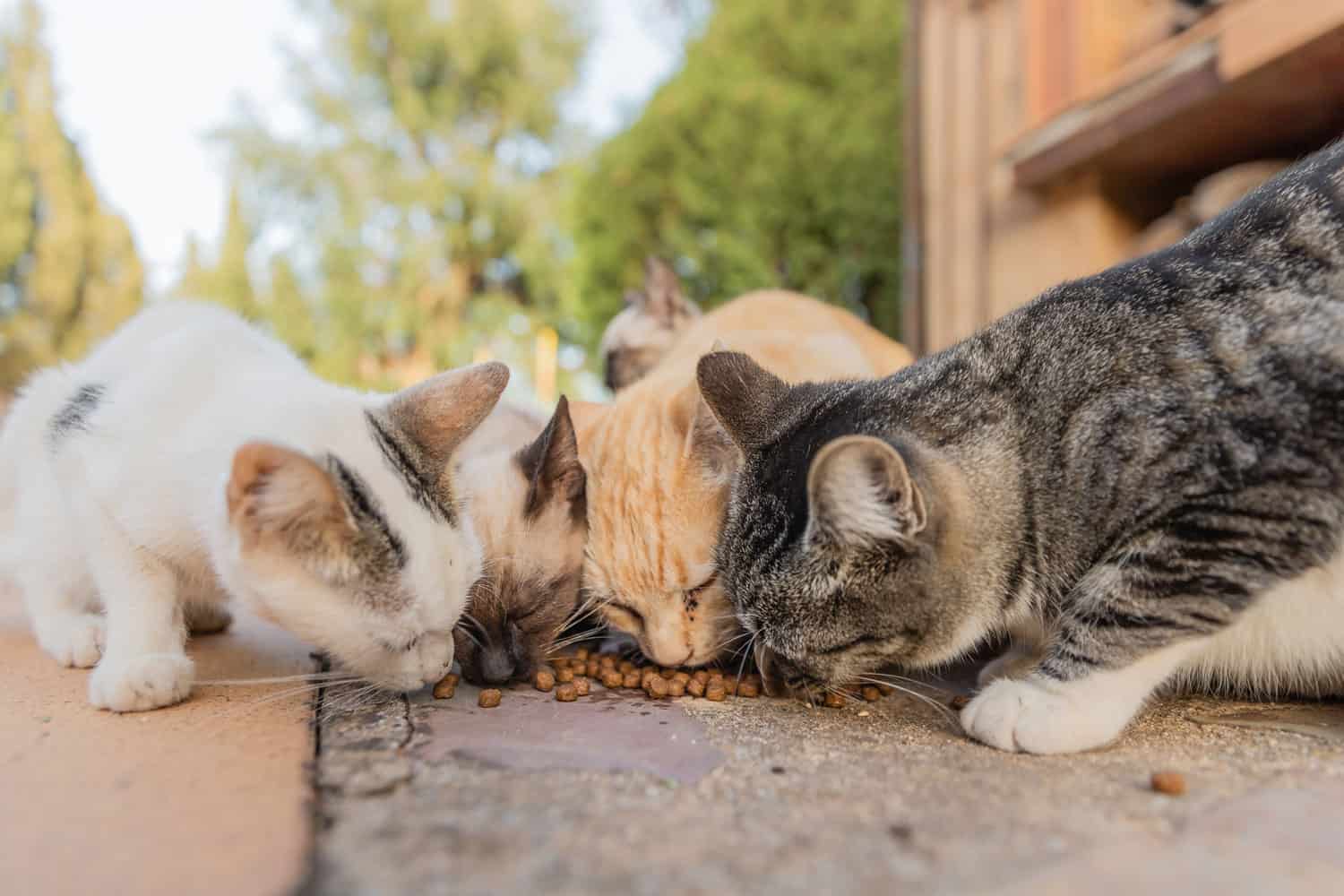
High death rates or low birth rates are two methods that can be used to control an overpopulation crisis. The U.S. currently chooses the former.
Millions of unwanted animals are destroyed each year. As resources dwindle, less is spent on education and few low-cost sterilization programs are offered.
The public often does not realize the extent of the crisis. Many shelters do not reveal that relinquished animals will probably be killed for fear these animals will be abandoned.
Killing these animals is not a pleasant subject for the general public so it is hidden.
The British were the first to accept the humane, nonlethal management of feral colonies.
A committee of scientists and humane educators established a policy almost three decades ago.
The RSPCA then accepted alternatives to lethal control, and in 1977, Cat Action Trust formed, a group with 24 chapters that neuters feral cats in the U.K.
SIGN UP FOR THECATSITE'S EMAIL UPDATES >
Annabell Washburn, founder of Pet Adoption and Welfare Services of Martha's Vineyard, was one of the first to introduce non-lethal control methods to the U.S.
After hearing U.K. animal behaviorist and feral cat expert Peter Neville speak at a conference in Boston, she started a sterilization program on Martha's Vineyard and spoke at conferences in the northeast.
However, there have always been individuals in this country who have realized independently that they need to trap and sterilize ferals to stop the breeding.
One 82-year-old retired university professor from New Jersey called to tell me she had been doing this for fifteen years and thought she had invented the method!
What Do You Do When You Find a Feral Cat or a Colony?
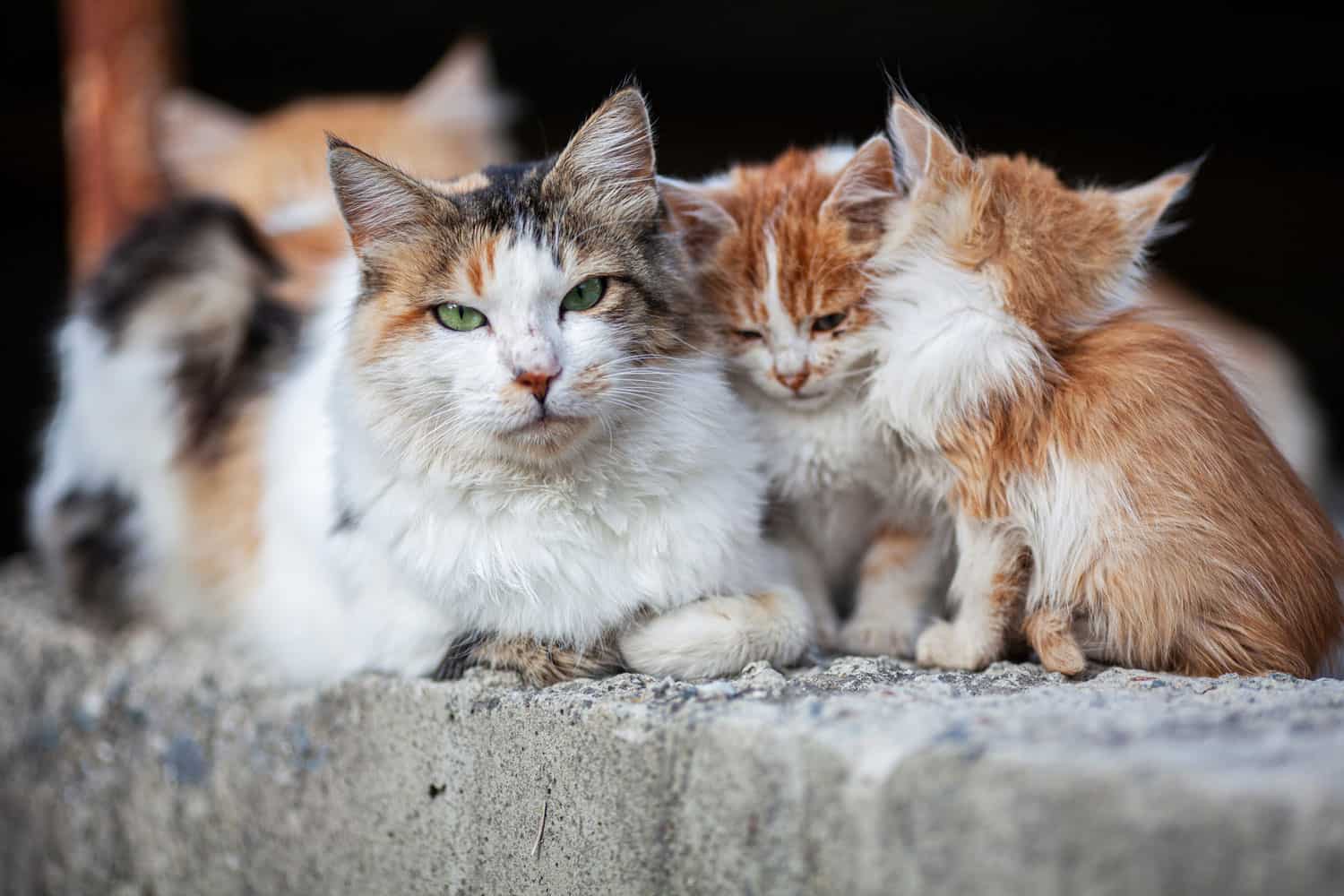
Many people want to scoop up all ferals and place them in homes or sanctuaries, but we must understand that this is impossible.
The U.S. currently has a population of about 60 million ferals. Additionally, we are killing approximately 6 million domestic cats each year.
The Breeding Cycle Challenge
There are simply not enough homes for friendly cats, and certainly not enough sanctuaries. Remember, most adult ferals would be very unhappy in our homes. Many are too wild to tame.
Finally, while there is still an overpopulation of stray cats, others will quickly fill the niches left by the removal of whole colonies and begin the breeding cycle all over again.
Guidelines for Managing Feral Colonies
The guidelines for managing a colony have to be strict: (a) The cats must be in a safe place; (b) caretakers must commit to long-term care, providing food, water and shelter and (c) the cats should be trapped, sterilized, vaccinated, and identified by "ear-tipping" the left ear (removing the top quarter-inch).
New cats entering the area should be assessed trapped and sterilized (this program is only for feral cats; those wild cats who have adapted to a feral existence and live in supportive colonies.
Lost or abandoned domestic cats should be re-homed.
Challenges with Relocation and Taming
If the cats come from a long-established colony, they are probably too wild to be placed indoors. Relocation is possible but is often difficult and time-consuming.
Farms with barns are the most suitable places for relocation, but require an understanding and caring individual willing to spend time with the cats to acclimate them to their new home.
Some folks want "barn" cats for rodent control without offering proper care (an unacceptable solution). Successful relocations depend on strict procedures that have developed over time.
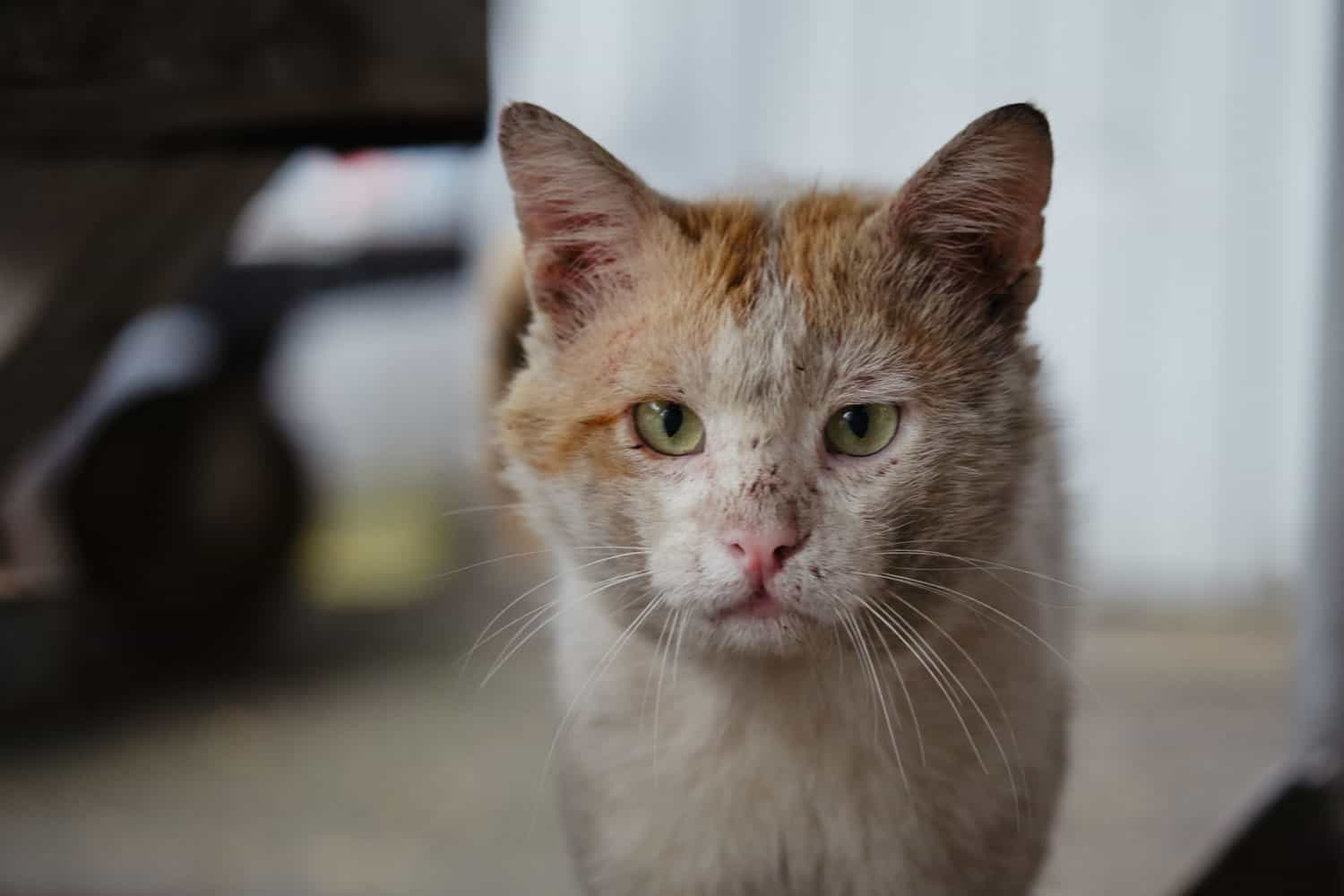
Placing an older feral in a home can be traumatic for both cat and first-time caretaker. The cat may hide in terror, and trying to catch her for trips to the veterinarian can become difficult.
The ideal time to tame ferals is before they reach three months old. Some ferals caught just a month later at four months old can remain fairly wild, unless someone with experience with older ferals can work with it.
Cats in such maintained colonies can have a good life, provided caretakers supply them with all the basic needs and provide veterinary care when needed.
This requires a long-term commitment from people. Such dedicated caretakers should be not be placed in the position and forced to euthanize the animals. They also should not be penalized for feeding stray and feral cats.
Supporting Feral Cat Caretakers
Dr. Andrew Rowan, while still with Tufts University Veterinary Medical School, observed that this resource of people willing to step forward to care for colonies is quite remarkable and should be helped, encouraged, and supported.
Tufts has innovative programs for feral cats that have been in place for years. Teams of students have been sent annually to the Virgin Gorda Island -- under the auspices of Annabell Washburn, a pioneer in the movement for the humane control of feral cats -- to care for ferals found there.
Taming Kittens
Do not be fooled by cute little feral kittens! When you first bring them into your home, treat them with caution. They can inflict painful bites.
Place them in a covered, warm carrier with food, water and litter. Move quietly and talk softly when you enter the room.
Leave a radio playing soft music so they get used to human sounds. Usually, you can cover them with a towel and hold them firmly on your lap within twenty hours.
Scruff them gently but firmly at the neck (this will not hurt them, but immobilizes them and allows you to work with them without injury to them or yourself!). Use interactive cat toys.
They love playing with "Cat Dancers." If handled carefully, feral kittens can become tame within a short period, though, the older they are, the longer it will more likely take.
All feral kittens should be checked by a veterinarian and treated for parasites and fleas.
Roundworms and coccidia are two problems most alley kittens seem to be infected with and they need to be treated immediately to prevent any major health problems.
Ferals often bond with the first caretaker who helps them, and some find it difficult if not impossible to bond with another human.
If you are taming them for adoption, let them become exposed to many different people, and place feral kittens in new homes as soon as possible. They eventually make very lovable companions.
Tips While Caring For Ferals:
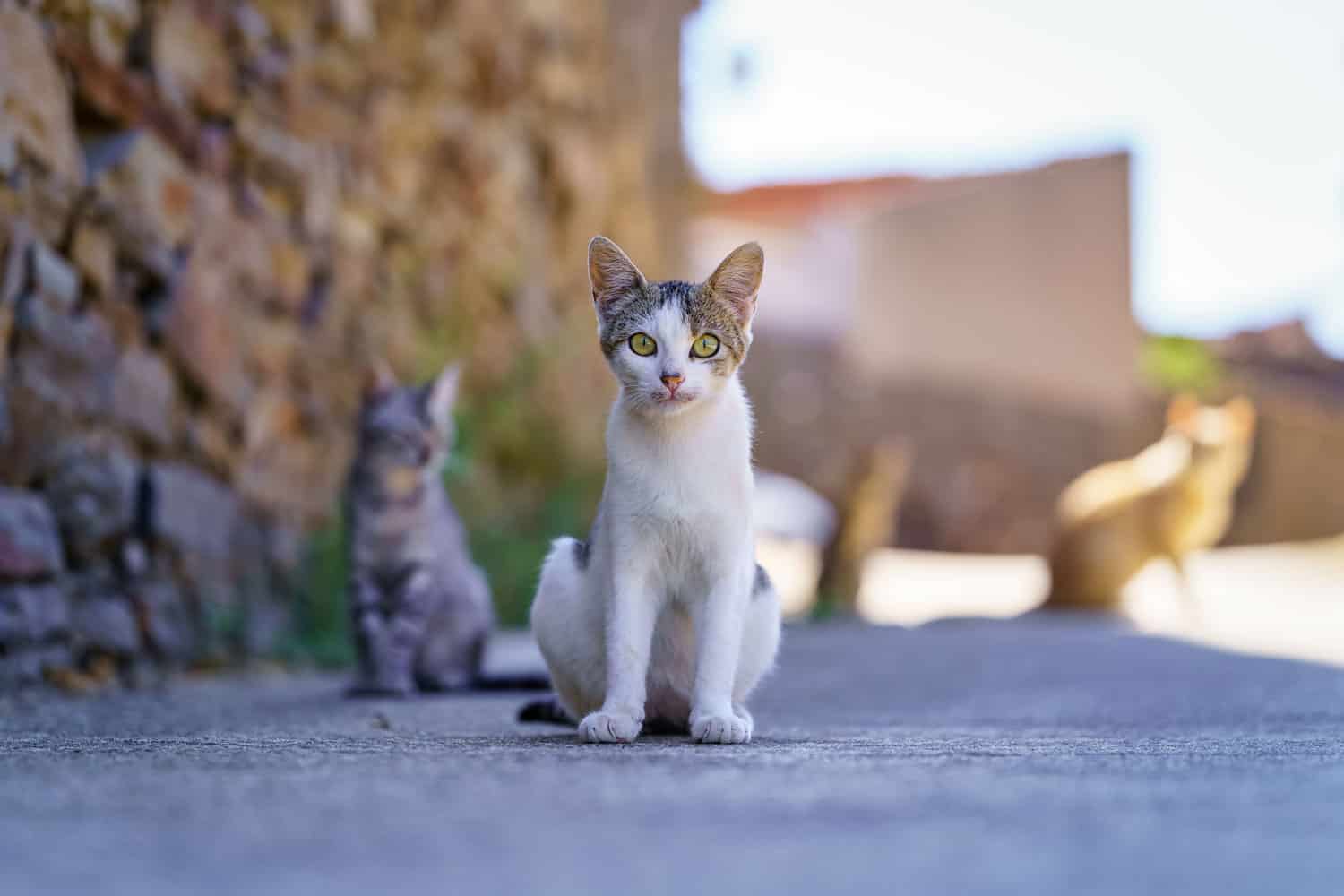
- If necessary, do some fundraising to help pay the bills. Initially, controlling colonies can be expensive. Ask your vet to consider a cost break, as you are helping to fix a neglected social problem.
- Get others involved. You will need help and support with feeding, trapping and placing kittens. Ask your local companion animal store to assist with adoption days and donations of cat food.
- Be careful not to take in too many cats. You may end up with a houseful of un-adoptable animals. Be prepared when you adopt out ferals that some may be returned to you, as some people cannot cope with cats who are the least bit "unfriendly" or timid.
- Tell people the cats they are adopting are feral. It is better for them to know what they are in for and that it may take weeks or months before they may finally have a lap cat, or that perhaps the feral may never be a lap cat.
- Make sure the cats you place are all neutered before placing, or that the new caretaker will neuter them. Have them all vet-checked and treat any health problems before placing. Have new caretakers sign an adoption agreement, and do house checks.
- Consider your local print and broadcast media for TV and newspaper coverage. The media is usually sympathetic to "Good Samaritans."
U.S. Groups Helping Ferals
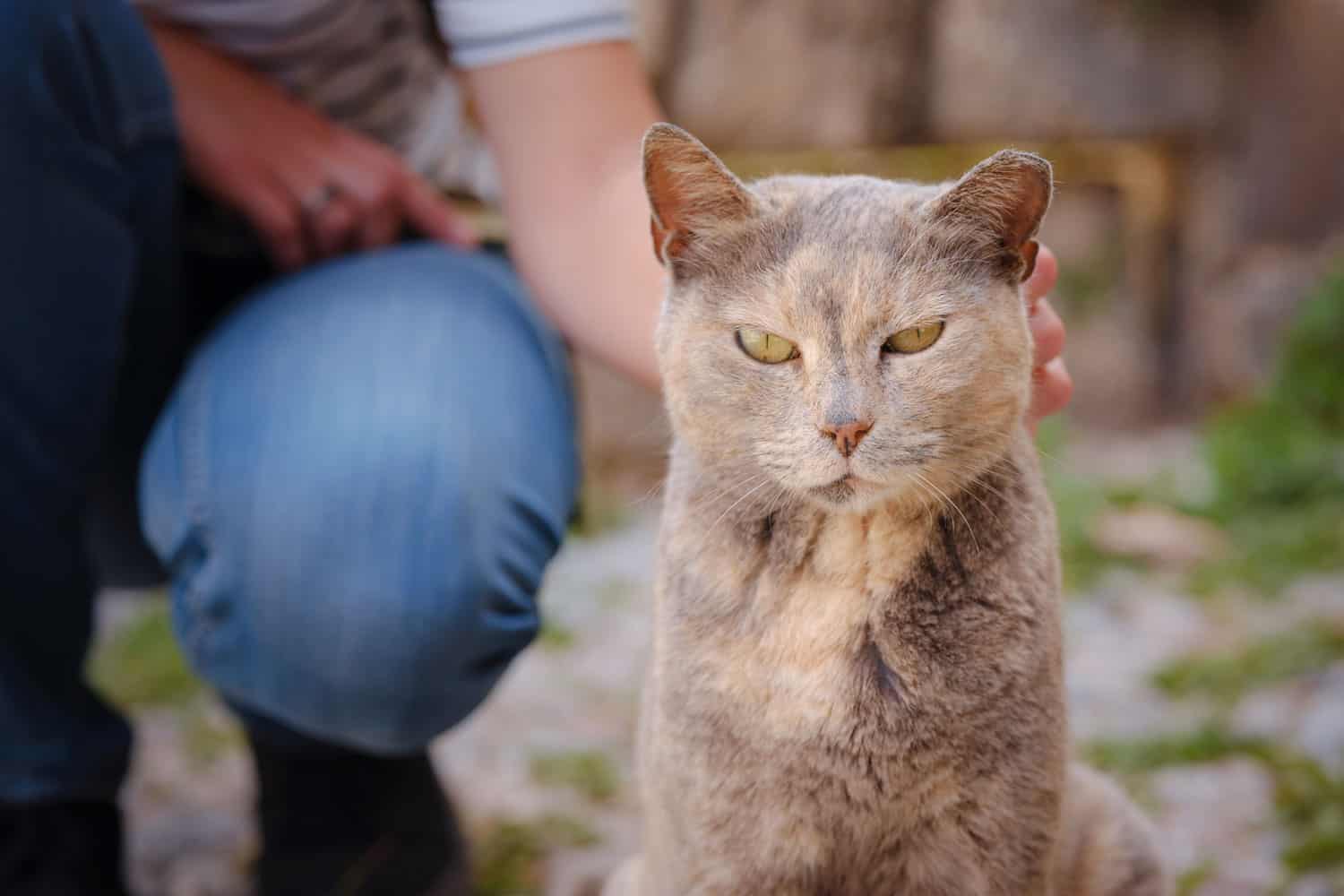
Many groups have formed all across the country to provide veterinary care and assistance for ferals. From Miami Beach to San Jose, Las Vegas to Boston, "ordinary" people all over are trying to stop the population explosion of feral cats using trap-neuter-and-release methods.
Feral Issues on University Campuses
University campuses are often a source of ferals. This is because many students keep unneutered cats and then abandon them when the semester is over.
In California, Stanford Cat Network formed in 1989 after the University planned to exterminate the 500 feral cats on campus. Today the numbers are down to 300.
The San Francisco SPCA, one of the first humane societies in the U.S. to accept trap-neuter-and-return (TNR) as a viable and humane alternative, has provided free surgeries for thousands of feral cats.
The Feral Cat Coalition of Portland was formed by veterinarians who have taken the lead in helping their city's feral cats.
The group holds monthly one-day spay/neuter clinics for ferals and the vets run the program without compensation.
Their mobile spay clinic is booked months in advance. So, if you live in the area be aware that there is a waiting list for these low-cost spay clinics.
Understanding Feral Cat Ecology
Many institutions, such as hospitals and nursing homes, have colonies of feral cats. A hospital in Carville, Louisiana, had been trying for years to eradicate its large colony.
Finally, some very obvious conclusions were reached: (a) the presence of the cats indicated that an ecological niche existed for approximately that number of cats; (b) removal created a vacuum that was being constantly filled through migration from outside; and (c) trap and kill schemes had alleviated the problem temporarily but had not been a permanent solution.
Therapeutic Benefits of Feeding Ferals
At the Carville Hospital, regulations by the authorities to stop feeding cats were consistently ignored. Feeding feral cats in institutions can have long-term positive benefits on patients.
This has been proven many times in English studies. The Carville Hospital study was conducted in a scientific manner and is well-documented. The findings were published in the Journal of the American Veterinary Medical Association.
Alley Cat Rescue runs a national feral cat network to promote non-lethal control of feral colonies. Through workshops, conferences, articles and educational fact sheets, a large network has formed to support those wanting humane methods of control.
The Need for a Unified Approach
As we have seen, the U.S. currently has millions of compassionate people willing to feed and take care of alley cats. But, a national community effort is needed to solve the current crisis of feline overpopulation.
Humane solutions cannot be initiated on a large scale without the cooperation of humane societies, shelters, and the veterinary community, and the support of the public.
We may not be able to sterilize every feral cat in the U.S.. However, we can stabilize large colonies and stop their growth through sterilization, aggressive educational programs in neighborhoods where unaltered cats are allowed to roam. We can also offer low-cost spay/neuter programs.
As adaptable as these cats are, the only common-sense approach is TNR versus the other extreme about eradication that has already been proven will not work.
SIGN UP FOR THECATSITE'S EMAIL UPDATES >
Written by Louise Holton
Printed in The Animals' Voice - 1996
Winner of a Muse Medallion from The Cat Writers' Association
Founder/President of Alley Cat Rescue Inc., Louise spends her time entirely devoted to ferals and their cause. Using her skills as a writer she has authored many articles surrounding these cats. Specializing in feral cat management, diseases, feline behavior and predation issues, she has compiled scientific research and 40 years of hands-on experience in her book Alley Cat Rescue's Guide to Managing Community Cats.
Comments? Leave them using the form below. Questions? Please use the cat forums for those!
Note: We may get commissions for purchases made through links on this page.

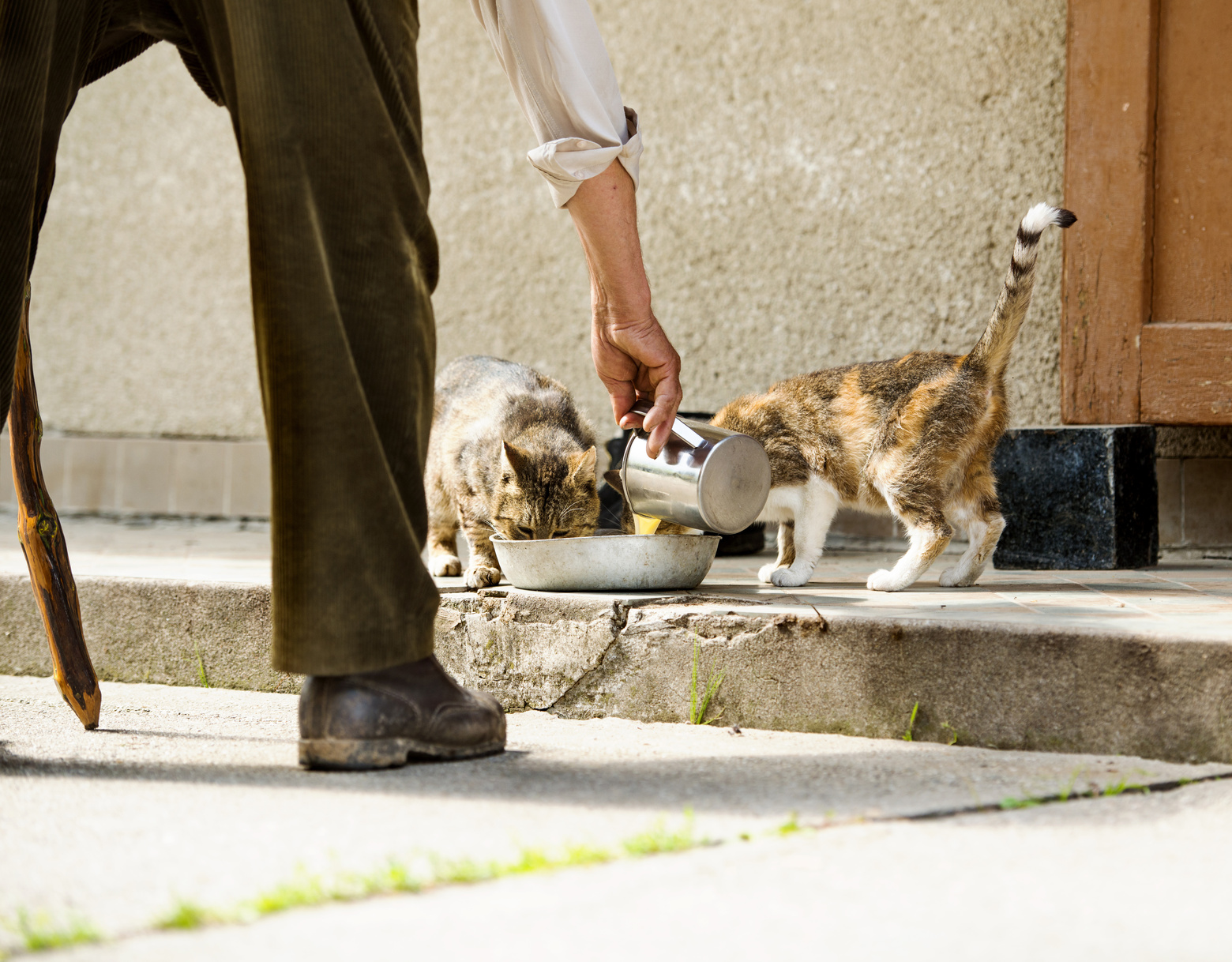

5 comments on “Saving Feral Cats”